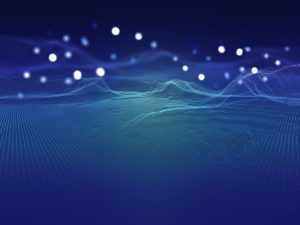
In an era where technological advancements are reshaping industries and business functions, the role of procurement has evolved from a transactional process to a strategic enabler of organisational success.
Recently, Globality joined forces with ProcureTech to conduct a thorough survey about the future of procurement. They gathered insights from almost 200 leaders across various sectors and company sizes. The results revealed that companies outperforming their peers have either adopted advanced digital solutions or are planning to do so very soon.
A significant finding highlighted that a stronger focus on digital transformation is a top priority for the next three years as procurement leaders adopt new technologies to inject agility into their operating models and react quickly to economic, environmental, and geopolitical changes.
90% of respondents anticipate some level of change in their operational model over the next three years. 63% of participants expressed optimism about the role of procurement evolving positively by harnessing state-of-the-art technologies.
This article explores the essential elements of a perfect digital landscape for a Head of Procurement, empowering them to drive efficiency, agility, and strategic value within their function.
Technological Evolution: AI, Machine Learning, Blockchain and IoT
Artificial Intelligence (AI), Machine Learning (ML), Blockchain, and the Internet of Things (IoT) are collectively reshaping the landscape of procurement by introducing significant advancements and transformative capabilities. Here’s how each technology is contributing to these changes:
- Artificial Intelligence (AI)
AI is revolutionising procurement by enabling advanced data analysis, pattern recognition, and automation of routine tasks. AI-driven algorithms can analyse vast amounts of data, extract insights, and make predictive recommendations, aiding in better decision-making. AI-powered chatbots can handle supplier inquiries, streamline communication, and provide instant responses. Additionally, AI-driven spend analysis tools help identify cost-saving opportunities and mitigate risks by analysing historical procurement data. - Machine Learning (ML)
ML, a subset of AI, focuses on the development of algorithms that can learn and improve from experience. In procurement, ML algorithms can predict demand patterns, optimise inventory levels, and enhance supplier performance. ML also plays a role in enhancing supplier selection by evaluating historical supplier performance data and market trends. It helps identify high-performing suppliers, reducing the risk of disruptions. - Blockchain
Blockchain technology offers enhanced transparency, security, and traceability in procurement processes. It provides an immutable and decentralised ledger that records every transaction. In supply chain management, blockchain ensures the authenticity of goods, prevents counterfeiting, and enhances visibility into the origin of products. Smart contracts on blockchain automate and enforce contract terms, streamlining payment and delivery processes. - Internet of Things (IoT)
IoT involves connecting devices and equipment to the internet, allowing them to collect and exchange data. In procurement, IoT sensors placed on goods can monitor their condition, location, and environmental factors during transportation. This real-time data enables proactive decision-making, reduces waste, and enhances supply chain efficiency. IoT also aids in predictive maintenance, ensuring critical equipment is serviced before breakdowns occur.
The Power of Digitalisation in Procurement
As enterprises strive to remain competitive and future-ready, the benefits of a digitally-driven procurement landscape become increasingly apparent.
- Efficiency and Automation:Routine tasks like data entry, invoice processing, and order tracking are automated, allowing procurement professionals to focus on strategic activities.
- Data-Driven Insights:AI and ML analyse vast datasets to uncover insights that aid in negotiation, risk management, and supplier performance evaluation.
- Enhanced Supplier Collaboration:Blockchain facilitates secure and transparent collaboration between suppliers and buyers, reducing disputes and delays.
- Risk Mitigation:Advanced data analysis and real-time monitoring provided by these technologies enable early identification and mitigation of potential disruptions in the supply chain.
- Cost Savings:AI-driven spend analysis tools identify cost-saving opportunities and optimise procurement processes.
- Innovation and Sustainability:These technologies enable procurement teams to explore innovative sourcing strategies and promote sustainability by tracking environmental impact throughout the supply chain.
Key Components of a Digital Landscape
The journey toward a perfect digital landscape involves a well-rounded approach, incorporating key components such as:
- E-Procurement Systems:Streamlining procurement processes through a digital platform that enables requisitioning, approvals, ordering, and invoicing.
- Supplier Portals:Establishing transparent and collaborative relationships with suppliers through dedicated portals for communication and updates.
- Contract Management Platforms:Digitising contract lifecycles for enhanced visibility, compliance, and performance tracking.
- Spend Analytics Tools:Harnessing data analytics to gain insights into spending patterns and identify opportunities for cost reduction.
As procurement evolves into a strategic enabler, Olympe‘s comprehensive software composition platform equips Procurement Departments with the tools needed to optimise sourcing, streamline workflows, mitigate risks, and deliver cost savings. By embracing digitalisation, procurement leaders can position themselves as key drivers of efficiency, agility, and strategic value within their organisations, ushering in a new era of procurement excellence.
*Image by kjpargeter on Freepik
Connect What You Have, Create What You Need – Now.
 August 24, 2023
August 24, 2023  6 minute(s)
6 minute(s)